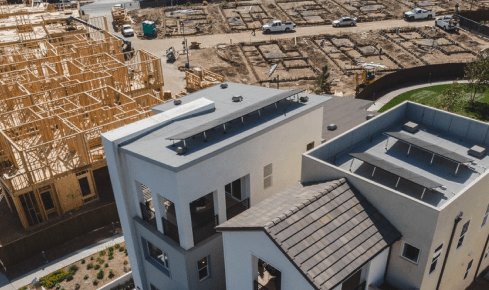

Residential developers and homebuilders in California already enjoy some of the best green home modification incentives in the country. But more is always welcome, and the California Energy Commission delivered just that when it unveiled a fresh incentive program for all-electric homes.
Launched in 2023 by the California Energy Commission, the California Electric Homes Program (CalEHP) is equipped with $58M in funding, roughly $10M of which has been designated for energy storage measures.
The focus of CalEHP is clear — support California builders engaged in the construction of new, all-electric residential developments by driving down the cost to do so.
With incentives capped at roughly $2M per builder, it’s important to act quickly before this valuable incentive pool dries up. If you’re looking at total electrification for your developments, here’s what you need to know to take advantage of CalEHP.
Who’s Eligible for CalEHP Incentives?

Any market rate, 100% all-electric residential project — either single-family, multi-family or manufactured housing — located in California is eligible for CalEHP incentives. This requires developers to install:
- Induction Cooking
- Segregated Circuit
- Heat Pump Space Heating
- Heat Pump Water Heating
- Thermostatic Mixing Valve (not required for accessory dwelling units)
- Communicating Thermostat (not required for properties installing VCHPs)

What Are the CalEHP Incentives?
CalEHP base incentives extend to both single-family and multifamily developments, with bonuses for above-code and energy storage measures. CalEHP will also coordinate with other all-electric new construction programs to maximize incentives for all-electric construction in California.
CalEHP Base Incentives
Base incentives are tiered by year the accessory dwelling unit (ADU) is completed, and are as follows:

Single-Family, Duplex, Triplex & Townhouse
2023 | $3,500 per participating dwelling unit + $1,750 per ADU
2024 | $3,000 per participating dwelling unit + $1,600 per ADU
2025 | $3,000 per participating dwelling unit + $1,600 per ADU
2026 | $2,500 per participating dwelling unit + $1,400 per ADU
2027 | $2,500 per participating dwelling unit + $1,400 per ADU

Multifamily Apartments & Condominiums
2023 | $1,750 per participating dwelling unit
2024 | $3,000 per participating dwelling unit + $1,600 per ADU
2025 | $3,000 per participating dwelling unit + $1,600 per ADU
2026 | $2,500 per participating dwelling unit + $1,400 per ADU
2027 | $2,500 per participating dwelling unit + $1,400 per ADU

CalEHP Base Incentives
Energy storage incentives, only recently added on to the CalEHP program, are as follows:
- $250 per kWh for storage
- $300 per kWh for storage in all-electric reach code jurisdictions*
For example, developers installing a 13.5 kWh capacity battery could receive an incentive of $3,375 — or $4,050 in an all-electric reach code — per dwelling unit. Additionally, single-family units located in a hard-to-reach (HTC) or disadvantaged community (DAC)* are eligible for an additional $500 per dwelling unit.
Bonus Measure Incentives
|
Bonus measure incentives per dwelling unit don't change year over year, and are as follows:
|
|
|---|---|
|
Envelope Package
|
✓ |
|
Mechanical Package
|
✓ |
|
Envelope + Mechanical Adder
|
✓ |
|
Smart Panel or HEMS
|
✓ |
|
HPWH Controller
|
✓ |
|
Heat Pump Pool Heater
|
✓ |
|
ENERGY STAR®
|
✓ |
Developments located in HTRs or DACs are also eligible for an additional $500 per dwelling unit. ADUs in these communities are eligible for an additional $350.
CalEHP incentives are distributed on a first-come-first-serve basis. Once approved, CalEHP funds are locked in and dispensed once the project is complete, so it’s important to act quickly before the funds are gone.
If you have any questions about the California Electric Homes Program, or what it takes to apply for incentives, reach out to Sunnova New Homes and a knowledgeable rep will explain in more detail. With connections at the California Energy Commission and CalEHP, we have the expertise to help you maximize your all-electric homebuilding incentives.
